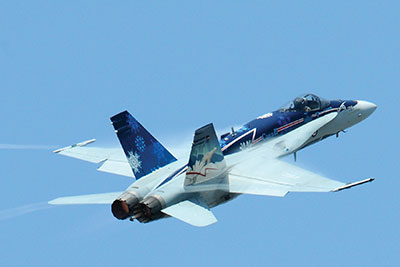
Features
Operations
Glide Path: The putting it off method
Having worked in and around three levels of government, it has always struck me as appropriate that April Fools’ Day marks the fiscal starting line in this country.
May 6, 2014 By Paul Dixon
Having worked in and around three levels of government, it has always struck me as appropriate that April Fools’ Day marks the fiscal starting line in this country. It’s an irony seemingly unnoticed by those at the head of the parade.
 |
|
| It’s an irony seemingly unnoticed by those at the head of the parade. PHOTO: Paul Dixon
|
It used to be that as the fiscal year drew to a close, there would be a flurry of spending to use any and all available remaining funds arising from the mindset of “use it or lose it,” when so many budget lines simply repeated themselves every year. Now, in the brave new world, we see projects cancelled outright or pushed into next year and even further beyond to maintain the illusion of fiscal control.
For example, the CF-18 replacement project is stretching out to a point where it may exceed the lifespan of the actual aircraft. One thing we know for sure is that the day will come when the last Hornet hits its best-before date and it seems a good idea that the replacements should be in place before that happens. The irony of the current situation is that the decision to go with the Hornet more than three decades ago was, by all accounts, a success story in Canadian military procurement, using the lessons learned from the problems associated with the acquisition of the CP-140 Aurora, which has been politely described as a textbook example of “gold-plating.” There was nothing wrong with the aircraft; it’s just the decisions that were made along the way that didn’t make sense.
Now, as the Auroras are well into their fourth decade of service, we’ve seen plans that called for them to be replaced by a new aircraft; then there was to be an extensive re-fit to double their life expectancy which gave way to a call to move into the unmanned world of the Global Hawk and other large-scale UAVs. It also appears there may be plans afoot for upgrading some of the Auroras and integrating them with a more modest UAV fleet. You can spend the same dollar in a number of different ways, but the key is to figure out what you think you will need in the future and what it will look like when you get there.
So, now the pressure is rising on the federal government to consider other contenders for the CF-18 replacement that aren’t the F-35. If the new plane can be expected to last as long as the aircraft it is replacing, how easy is it to look that far into the future given the rate of technological change today? What will the world’s energy needs be? Maybe it’s time to go back to the simpler days of the Second World War and the Cold War, when good and evil were easy to understand, when there was little more than a decision between a black hat versus a white hat.
The financial side of the acquisition conundrum becomes a kaleidoscope of numbers, which will tell you everything and absolutely nothing at the same time. The costs get sliced and diced to the point where it makes Humpty Dumpty look like a slight sprain. We may know what the off-the-shelf-price of an item is, but what will the annual operating costs be in 10 years. What will a mid-life refit cost in 20 years? Do we expect our military to exist on an equal footing and at the least maintain the levels of competency they have achieved over the past decade? I sure hope so.
When it comes time to make a decision and pull out our cheque book, one more question needs to be asked and answered: who is going to benefit most from any major defense purchase the government makes? Will Canada benefit in terms of providing the platforms to support domestic and foreign policy for the people we ask to step in harm’s way? Or, will the political processes dictate the decision? When the policy wonks take over, it’s like dealing with a recalcitrant child. There is a great reluctance to accept any information that will discredit or diminish its position and a proclivity to attack any naysayers.
It reminds me of a lesson we were taught in Grade 8 science when confronted with a problem. The goal is to understand the issues and come up with the question. Then we create a hypothesis and then conduct a scientific experiment or series of experiments that will answer the question by proving or disproving the hypothesis. You have to start at the beginning and work to the end. The conclusion you arrive at must always be based on the actual experiment – don’t ever start with the answer you want and attempt to work backwards to the question. So, in the case of CF-18 replacement aircraft can we please just figure out what the question is and get on with it?
Paul Dixon is freelance writer and photojournalist living in Vancouver.